eBook
Best Practices for SAP Automation - A roadmap for building success from the inside
Who’s this eBook for and why should you read it?
Every successful digitization initiative starts with a plan and a map to align people, processes, and technology—whether you’re optimizing a single process in your department or looking to make a more significant impact across your organization.
If you’re responsible for improving SAP automation processes and data quality, this eBook is for you. You’ll learn the questions to ask and best practices to follow at each step of your journey to ensure you get both faster processes and better data—and ultimately achieve your business goals.
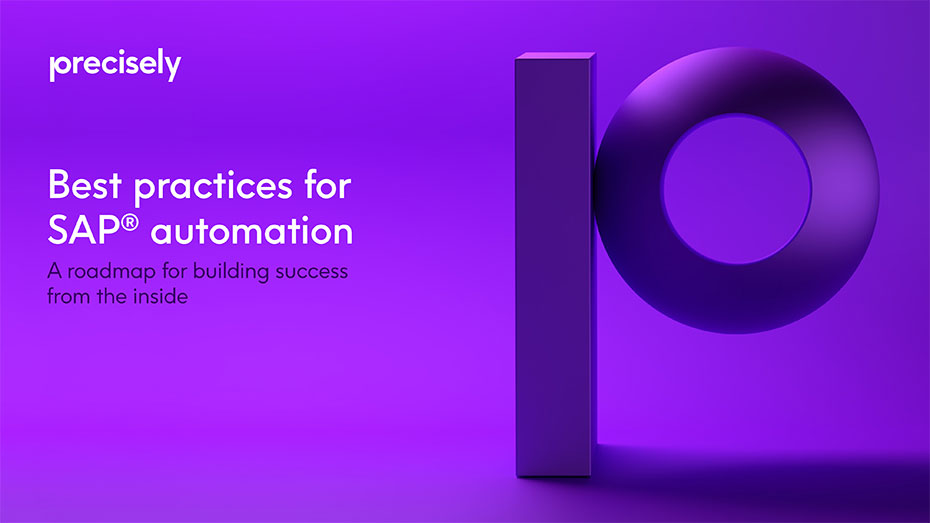
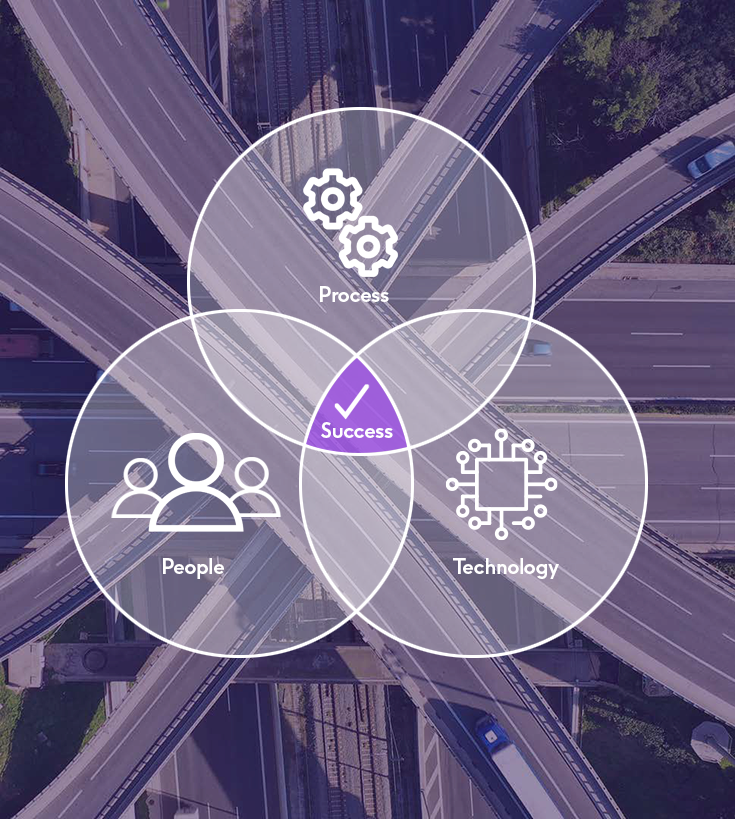
Introduction
A familiar scene plays out even in the largest companies in the world. Your organization buys the latest and greatest technology platform—you know, the one that promised to solve all your business challenges. You’re full of hope, but after nine months, you’ve only rolled out one solution—and that’s not been widely adopted by the business.
Why does this happen? What makes even the best technology fail, and the most hopeful transformation leaders lose faith? Sometimes it’s because the technology was oversold. Sometimes organizations try to tackle too much too fast or lack the organizational maturity to transform critical processes. Mostly it’s a combination of these factors.
In this eBook, we’ve distilled almost 20 years of working with customers into a roadmap you can follow to successfully transform even the most complex SAP processes. We’ll walk you through what it takes to align your people, processes, and technology and provide some in-depth questions and best practices you can use to reach your ultimate destination—a land of faster processes, better data, and happier, more productive business teams.
STEP 1
Start with the right people
Getting the right people involved upfront is the essential first step in any automation journey. It doesn’t matter how great the enabling technology is if the people running the transformation project don’t understand the business goals and can’t picture an optimized future state.
To that end, it’s critical to involve the people in the business who understand the process and the data the best right at the beginning of your automation journey and keep them engaged throughout the entire process.
The road to success is long and winding if a centralized IT team runs an automation project with minimal participation from the business.
This unfortunate situation typically results in a vast IT backlog of projects, longer implementation timelines, and suboptimal business results.
What’s even better than involving the business? We think it’s empowering the business. Give business process owners (often business analysts or similar roles) the right tools, and they can achieve amazing results—building optimized workflows or SAP-enabled Excel workbooks that speed up processes and improve data quality. When the business is empowered, transformation happens faster and at scale—with more impactful outcomes.
“Precisely Automate has empowered our end users to complete processes themselves, and the simplicity of the system allows us to understand how it works and how to get things done.”
O&M Manager
E. ON.
BEST PRACTICES:
| ✓ | Engage the business early/often. |
| ✓ | Empower business teams to automate their processes. |

Columbia Sportswear loaded more than 5.4 million records from legacy systems into SAP with Automate Studio.
Why a business-led, IT-enabled approach works
Empowering key players in the business to digitize their processes doesn’t mean loss of control—far from it. The approach we’ve seen work best is where companies form a Center of Excellence or CoE around automating their SAP processes. The CoE is the central team, and its members are considered subject matter experts or SMEs. CoE team members may include:
- One or more administrators who tightly control the use of automation platforms and provide technical assistance to the business where needed.
- Business or IT team members who know the most about organizational goals and business processes needed to achieve those goals. These people may also author solutions.
The CoE team understands what is possible and is provides administration, planning, consulting, development, and training support for solution authors and business users outside of the CoE. This CoE structure scales up the impact of your digitization efforts and achieves the best business outcomes faster—all while maintaining centralized control of your critical SAP processes and data.
“We needed a tool that would allow us to work within the SAP framework and make manual SAP tasks go faster. We saw Automate Studio as a good fit and a great bridge between IT and the business because the team could use it at a technically advanced level to quickly turn around solutions that would solve problems for the business.”
Data Conversion Manager
Columbia Sportswear
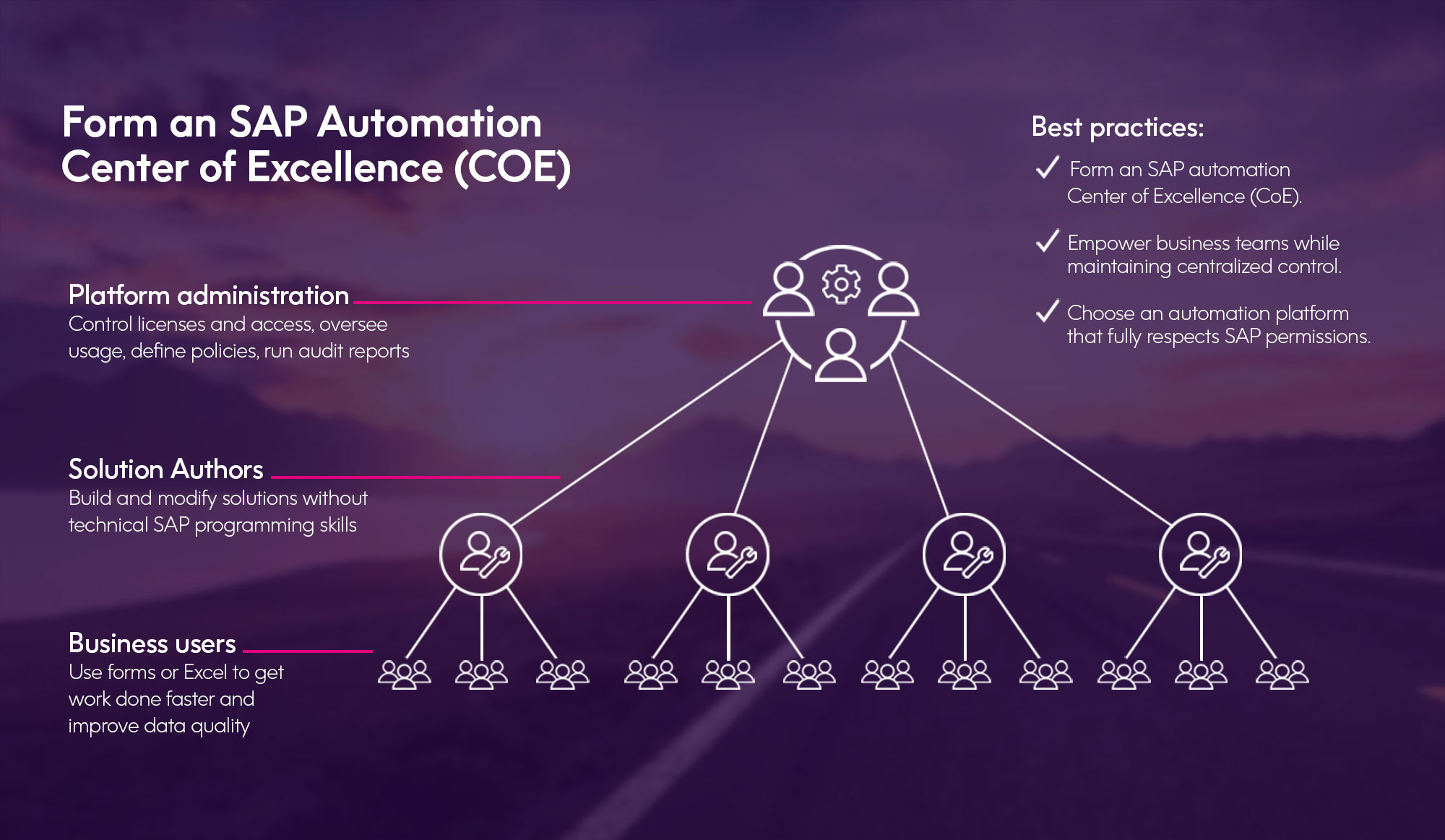
What skills do you need for your COE?
Your CoE team members may come from a centralized IT group or master data team or reside in the line of business. To the right are a few questions to help to find the people for the right roles.
You will probably find yourself narrowing down the field to business analyst roles or master data experts.
Once you’ve found the core members of your CoE, it’s time to move on to optimizing your processes.
“Precisely Automate gives us the level of automation we want, with the audit and security we need.”
Business Solutions Lead
Surrey County Council

Platform administrators
- Who should be responsible for assigning automation platform user licenses?
- Who understands user roles and permissions?
- Who has the right skills to understand and configure automation platform options?
- Who has the right skills and time to administer the platform administration and troubleshoot issues?

Solution authors
- Who knows the business process the best?
- Who writes or best understands the work instructions?
- Who does everyone go to with business process questions?
- Who are the problem solvers when it comes to SAP processes and data?
STEP 2
First, optimize the process, then digitize
Before you even think about how you’re going to digitize a process, it’s important to take a step back and examine what you’re doing today. As the quote from Bill Gates explains, simply automating a sub-optimal process is a costly mistake.
When optimizing SAP processes, you need to think about the process and the data simultaneously. The two are inextricably linked. Whether you’re trying to accelerate an entire product launch process, onboarding a new business partner, or setting up new equipment, a successful SAP automation journey starts with optimizing the steps in a process flow and determining the business rules around the data. How long this step takes will depend on your maturity level, both from an automation and organizational standpoint.
Regardless of where you’re starting, there may be tough conversations you need to have with the stakeholders. And there’s one critical success factor for any type of automation project—change management.
“The first rule of any technology used in a business is that automation applied to an efficient operation will magnify the efficiency. The second is that automation applied to an inefficient operation will magnify the inefficiency.”
Bill Gates
BEST PRACTICES:
| ✓ | Take the time to optimize processes before digitizing. |
| ✓ | Be prepared to manage change and have tough conversations. |
Questions to ask:
Here are a few basic questions to ask to help you get started on your journey to an optimized workflow, better quality data, and compliant, auditable processes.
Questions around the process:
- How is the process done today?
- What’s driving the need to automate the process?
- Shorter timelines, better data quality, more compliant auditable processes?
- What does success look like, and how will you measure it?
- Where are the process gaps?
- Are there steps that need improvement?
- Are all the steps in the current process necessary?
-
- If the answer is; “yes, because that’s the way it’s always been done,” dig deeper by asking:
— Why have they always been done this way?
— Are these steps still aligned with current requirements? -
- Do these process steps vary by conditions like region, plant, product line, sales org, company, etc.?
- Are there serial process tasks you could assign in parallel to make the process more efficient?
- Is there any duplication of effort throughout the process? Can those tasks be combined or eliminated?
- Which stakeholders need visibility into process status?
Questions around the data:
- What are the business rules around the data?
- Who needs to establish those rules?
- Do the business rules vary based on conditions like region, plant, product line, sales org, company, etc.?
- How often do the business rules change?
- Who’s allowed to change the business rules, and what’s the process for doing that?
With the right team assembled and a clear vision of what your optimized process looks like, it’s time to find the right enabling technology.
STEP 3
Choose the right enabling technology
The third element of a successful business SAP transformation project involves finding the right enabling technologies and partner for your journey to faster processes and better data. And given the complexity of both SAP processes and the underlying data structure, it’s vital to choose a platform that includes sophisticated process automation, data stewardship, and deep SAP integration capabilities.
In the following pages, we’ll share with you some detailed questions to ask across different categories to guide your search for the optimal platform and partner for your SAP transformation efforts.

Ascend Performance Materials achieved 99.9% data accuracy and massive time savings with supply chain automation.
“The distinction between the different use cases really shows the flexibility of Automate Evolve in that it enables users to automate a process that’s agnostic of the system. We need that flexibility to refine our processes rapidly to meet the business needs in this dynamic environment.”
BEST PRACTICES:
Compile a list of questions to guide your vendor evaluation process.
| ✓ | Look for a platform that combines process automation and data management capabilities. |
| ✓ | Ensure the platform you choose is certified for both SAP ECC and S/4HANA. |
Platform flexibilityCan the platform:
- Automate processes across departments and SAP modules?
- Automate both ECC and S/4HANA processes?
- Accommodate different process and data needs by region, sales org., plant, product line, etc.?
- Accelerate processes while improving data quality and compliance?

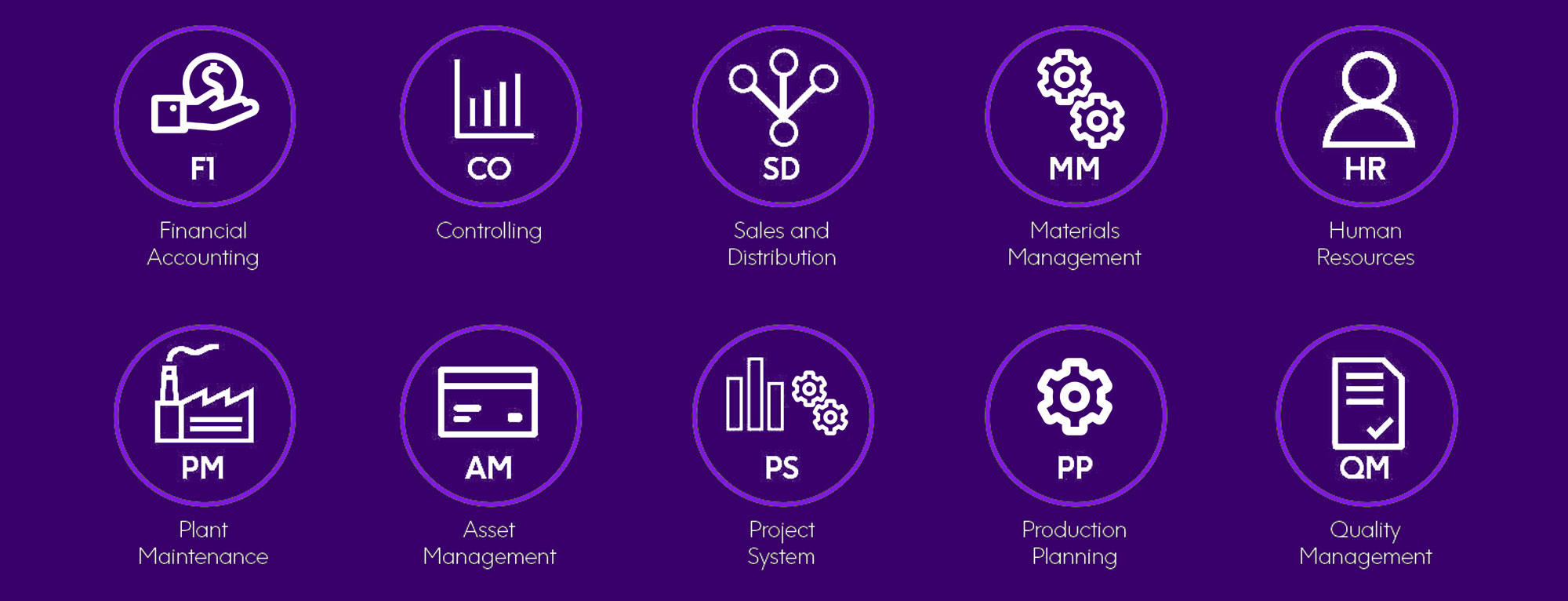
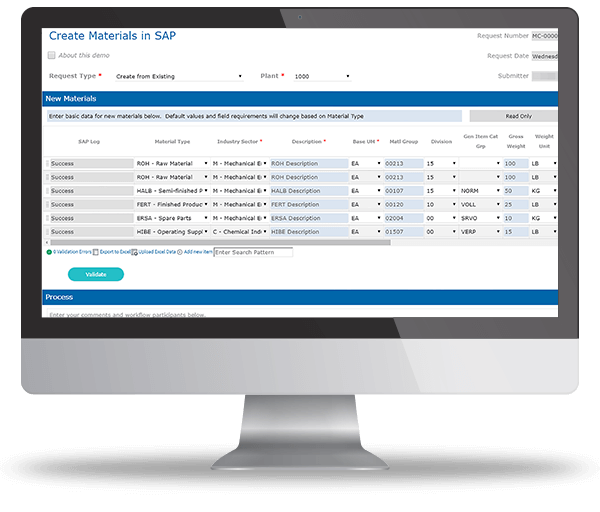
Make sure the automation solution you choose makes it easy for business teams to get work done faster with intuitive role-based forms or SAP-enabled Excel workbooks.
Questions to ask:
Business user interface
Can the business users:
- Get work done with minimal support, and would they consider the user interface friendly?
- Supply, update, or approve data using tailored role-based forms?
- Process multiple related records in one form?
- Get an experience tailored for them if they’re a casual or an expert SAP user?
- Create and update records en masse via SAP-enabled Excel workbooks?
- See custom “how to” tips embedded within a form or Excel file?
- Use SAP F4 lookups within the forms or Excel-based solution?
- Get meaningful data errors that enable them to fix problems quickly?
- Easily pull in existing reference records instead of entering data from scratch?
Questions to ask:
High-level solution capabilities
Can solutions built with the platform:
- Handle complex multi-layered processes such as collecting centralized and plant-based data?
- Extract and post data from multiple SAP data objects?
- Use smart logic to drive workflow steps?
- Allow tasks to be completed in a parallel or serial mode?
- Automatically populate forms or Excel workbooks with data based on criteria such as user credentials or company code?
- Vary workflow steps or data collected based on certain conditions?
- Be scheduled to run automatically?
- Be expanded/edited over time without requiring a complete rebuild?
- Handle out-of-office delegations, reassign tasks, and lock tasks for group assignments?
- Support collecting and storing documents, images, and other files?
- Give workflow participants and management visibility into request status?
- Track and report on Service Level Agreements (SLAs)
- Provide historical data for auditing and reporting?
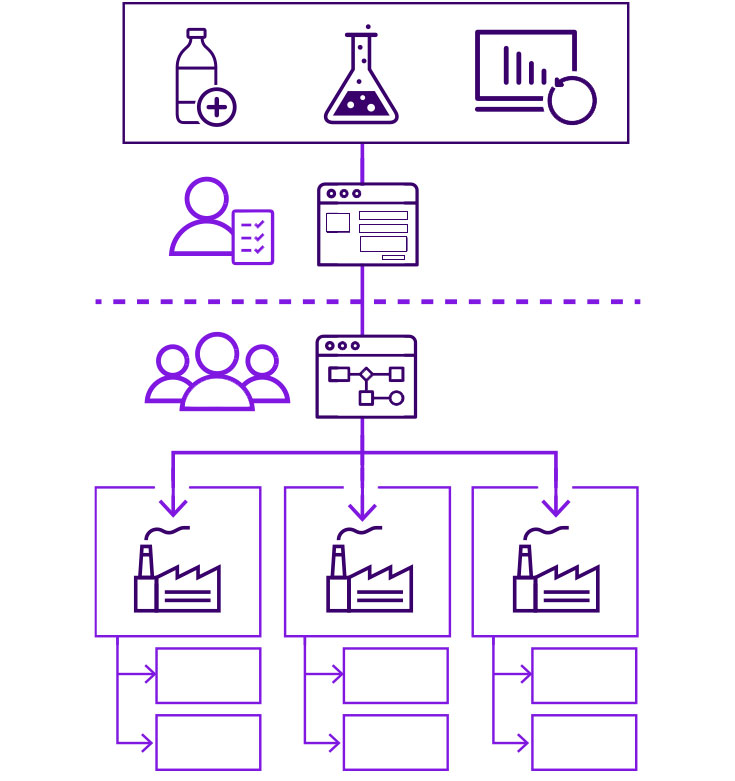
Make sure the platform you choose can dynamically link the appropriate subprocesses to complete complex multi-layered projects like product launches. Automation solutions must be able to collect data across SAP data objects and from centralized and decentralized sources such as plants.
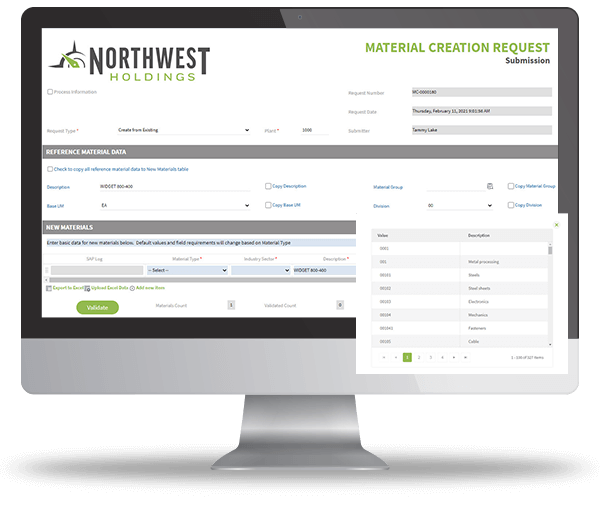
Choose an automation platform with deep SAP integration capabilities, including enabling business users to access SAP F4 lookup functionality within web forms or Excel workbooks.
Questions to ask:
SAP integration capabilities
Can the platform:
- Build data exchange scripts with a fast 3-step process? Securely exchange data in the background via RFC?
- Leverage pre-built SAP plugins for faster solution development?
- Bypass the SAP GUI to speed up data entry?
- Ensure that SAP permissions and security are respected? Validate data against SAP before posting?
- Enable business teams to use SAP F4 lookups in web forms or Excel workbooks?
- Exchange data fast with BAPIs?
Questions to ask:
Data stewardship capabilities
Can solutions built with the platform:
- Make searching for duplicates easy?
- Provide pre-set field values using drop-down lists to narrow down available options for business users?
- Make fields required in forms or Excel workbooks without making those fields required in SAP?
- Hide or show fields based on smart logic?
- Validate data against a live SAP system before submitting?
- Pre-populate data to save time?
- Standardize how data appears, such as capitalization and field length?
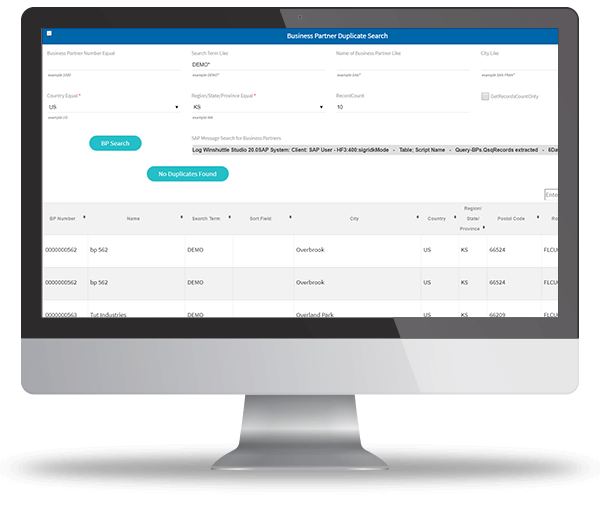
Look for an automation solution that has a full range of data stewardship capabilities, including making it easy for business users to search for duplicates before creating a new master data record.
“Now we can fine-tune our management of master data, and business users can author SAP transactions without submitting an IT request—even for one-off changes. That’s quite a trifecta: more functionality, happier users, and less administrative burden for our IT department.”
Supervisor, Applications and Technical Solutions
Carestream Health
Questions to ask:
Implementation & solution maintenance
- Do we need SAP programming skills to build/maintain solutions?
- Can we build solutions in-house, or will we need expensive consultants?
- If consultants are needed, are there qualified resources ready and available when we need them before, during, and after implementation?
- What is the implementation timeline and complexity?
- How much support will our business users need?
- How much will our SAP IT team need to be involved in installing and maintaining the platform?
- How scalable is the technology in terms of the number of business users and data throughput?
- How is the platform licensed?
- What is the underlying technology stack?
- What deployment options do we have?
Questions to ask:
The company behind the products
- How long has the company been in business?Are their products certified by SAP?
- Have they had proven success in large enterprise organizations?
- What’s on their product roadmap?
- Can they provide references and case studies?
- What’s their NPS score and customer satisfaction ratings?
- Do they have an active online customer community?
- What level of customer support do they provide, and where?
- Do they have comprehensive product online help and documentation?
- Are there any templates or accelerators available to fast track success?
- What kind of customer onboarding and training programs do they offer?
- What kind of input do customers have in determining future direction?
“I really appreciate the full support we got from our sales rep. It was really obvious that there was an interest from Precisely to make sure that not only did you create a good tool, but you made sure customers were really successful with it… I think that is a big advantage of Precisely.”
Data Integrity Manager
Kellogg Company
Summary
We hope this ebook has given you a lot of great information to use in your SAP transformation journey. While digitizing your business-critical SAP processes can seem overwhelming, the rewards of faster, more compliant processes and higher data quality are well within reach for any organization. And the great news is that you don’t have to tackle everything at once.
With a disciplined, strategic approach and the right toolset, you can start small, get some quick wins and expand your digital footprint at a pace that makes sense for your business.


We solve process and data problems
There is a class of business processes you must digitize to thrive in today’s increasingly competitive environment—one where process and data are interdependent. This is where Precisely Automate excels.
We empower business teams to make their processes faster and their data better. And while that may sound simple, it takes just the right combination of process automation and data management capabilities—and we’ve been perfecting that combination since 2003.
Explore our solutions and discover why over 2400 enterprise organizations across the globe trust our flexible no-code, low-code software to drive business results at scale, increase agility, and transform digital into a competitive advantage.